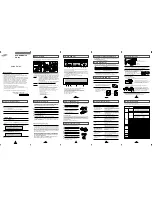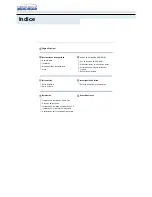
Adjustment Suggestions
4-
19
Flux vector
control
(A1-02 = 3)
ASR proportional
gain 1 (C5-01) and
ASR proportional
gain 2 (C5-03)
• Torque and speed
response
• Controlling hunting
and vibration
20.00
10.00 to 50.00
• Increase the setting if
torque or speed response is
slow.
• Reduce the setting if
hunting or vibration
occurs.
ASR integral time 1
(high-speed) (C5-02)
and
ASR integral time 2
(low-speed) (C5-04)
• Torque and speed
response
• Controlling hunting
and vibration
0.500sec
0.300
to
1.000sec
• Reduce the setting if
torque or speed response is
slow.
• Increase the setting if
hunting or vibration
occurs.
ASR switching
frequency (C5-07)
Switching the ASR
proportional gain and
integral time
according to the
output frequency
0.0Hz
0.0 to max.
output
frequency
Set the output frequency at
which to change the ASR
proportional gain and inte-
gral time when the same val-
ues cannot be used for both
high-speed and low-speed
operation.
ASR primary delay
time (C5-06)
• Controlling hunting
and vibration
0.004sec
0.004 to 0.020
Increase the setting if
machine rigidity is low and
the system vibrates easily.
Carrier frequency
selection (C6-02)
• Reducing motor
magnetic noise
• Controlling hunting
and vibration at low
speeds (3Hz or less)
Depends
on the
capacity.
2.0 kHz to
default
• Increase the setting if
motor magnetic noise is
high.
• Reduce the setting if
hunting or vibration occurs
at low to middle-range
speeds.
Table 4.4 Adjusted User Parameters (Continued)
Control
Method
Name
(Parameter Number)
Performance
Factory
Setting
Recommended
Setting
Adjustment Method
















































